Ten dead, including suspect, in Austria school shooting
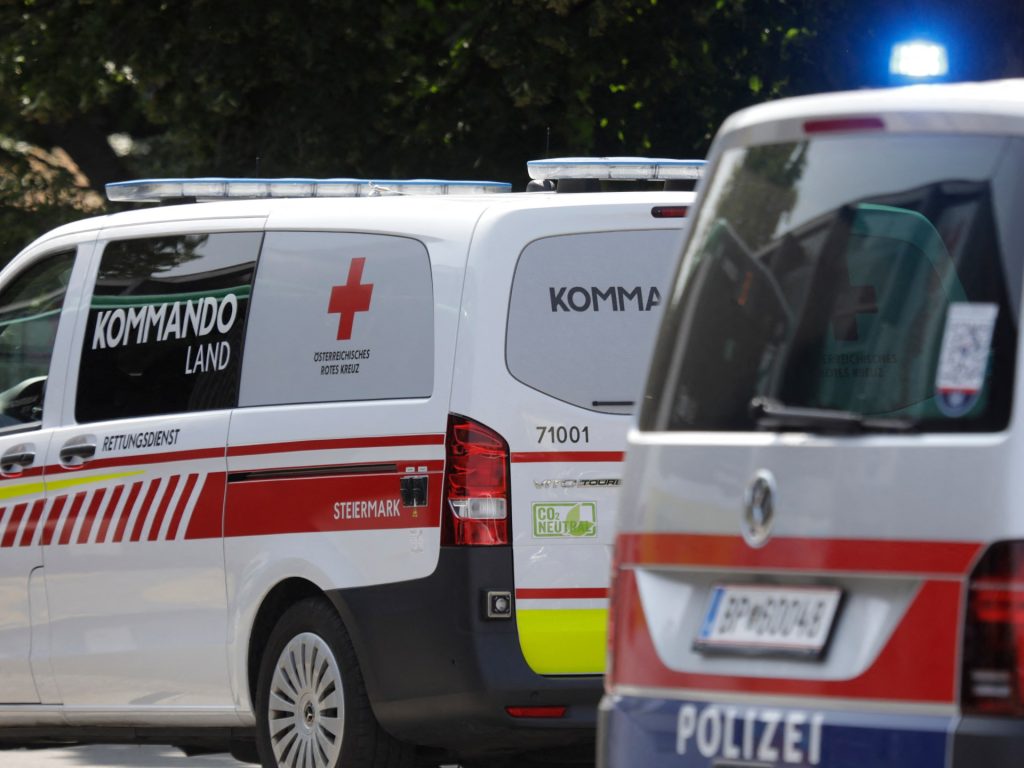
An attacker shot at least nine people dead, before killing themselves, at a school in the southeastern Austrian city of Graz, according to local authorities cited by media reports. Police said on Tuesday that they believed the assailant acted alone before turning the gun on themself. “Several” other people were seriously wounded, according to the authorities. Graz Mayor Elke Kahr described the incident as a “terrible tragedy”, the Austria Press Agency reported. It added that those killed included students and at least one adult. Officials did not immediately give information on the perpetrator. Austrian Chancellor Christian Stocker, who was on his way to Graz, said the shooting “is a national tragedy that deeply shocks our whole country”. Some weapons, such as rifles and shotguns that must be reloaded manually after each shot, can be bought in Austria after attaining the age of 18 without a permit. Gun dealers only need to check if there is no weapons ban on the buyer, and the weapon gets registered in the central weapons register. Advertisement Other weapons, such as repeating shotguns or semiautomatic firearms, are more difficult to acquire; buyers need a gun ownership card and a firearms pass. Adblock test (Why?)
Areas near Sudan’s Khartoum at risk of famine, says UN agency
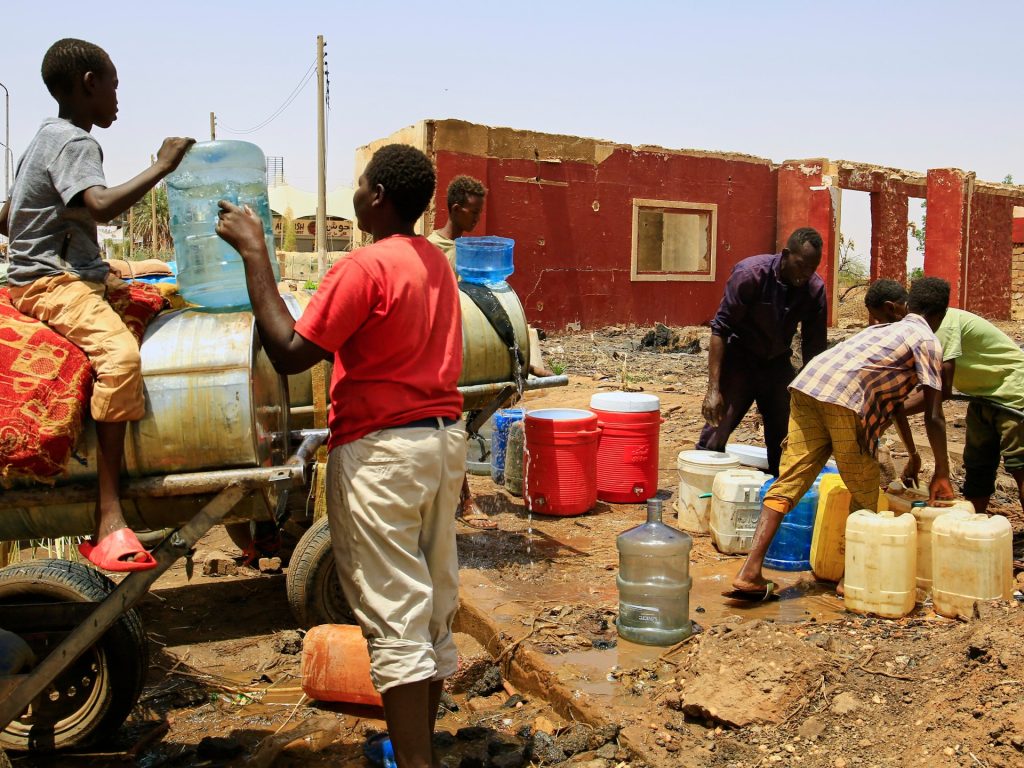
Severe levels of ‘hunger, destitution and desperation’ found in the town of Jabal Awliya, south of Khartoum. The risk of famine in Sudan has extended close to the capital Khartoum, the UN’s World Food Programme (WFP) has warned as the country’s brutal civil war grinds on into its third year. The agency has discovered “severe” levels of hunger in the town of Jabal Awliya, some 40km (25 miles) south of Khartoum, the WFP’s Sudan representative Laurent Bukera said on Tuesday. Speaking upon his return from a visit to Khartoum state, Bukera described “widespread destruction” in the town and other areas around Khartoum, and called for urgent international action to prevent famine. “The needs are immense,” Bukera said from Port Sudan, describing “limited access to water, healthcare and electricity”, as well as a cholera outbreak. “Several areas in the south of the city are at high risk of famine,” he added. “The international community must act now – by stepping up funding to stop famine in the hardest-hit areas and to invest in Sudan’s recovery.” The WFP, which says it is assisting four million people across the country, has had to reduce food rations in areas at risk of famine to 70 percent due to a major funding shortfall. Advertisement ‘Meeting basic needs critical’ The government-aligned Sudanese Armed Forces (SAF) and the paramilitary Rapid Support Forces (RSF) have been locked in a battle for power since April 2023. The army took control of Khartoum in March and declared the city “completely free of rebels” in late May. Now that WFP has access to the area and is able to make regular aid deliveries, the agency said it was doing everything it could to bring the local population back from the brink of famine. Bukera said “the level of hunger, destitution and desperation” found in Jabal Awliya was “severe, and basically confirmed the risk of famine”. The war has killed tens of thousands of people and created the world’s largest hunger and displacement crises. Over four million have fled the country and some 10.5 million are internally displaced, according to United Nations estimates. Bukera said that with people expected to return to heavily damaged areas like Khartoum, the pressure on already overstretched resources would intensify. “WFP is deeply concerned, and meeting basic needs – especially food – is critical and urgent,” he said. Famine has already been declared in five areas across Sudan, including three displacement camps near el-Fasher in the southwest. It has been all but confirmed in el-Fasher itself, where aid agencies say a lack of access to data has prevented an official famine declaration. Across the country, nearly 25 million people are suffering dire food insecurity. Adblock test (Why?)
Robert Kennedy Jr expels all 17 members of CDC vaccine panel

US President Trump-appointed Health Secretary and vaccine sceptic will replace panel with his own selections. United States Health and Human Services (HHS) Secretary Robert Kennedy Jr has purged a 17-member panel at the Centers for Disease Control and Prevention (CDC) that provides expertise on vaccines. Kennedy, who before taking a position in the administration of President Donald Trump was a vocal anti-vaccine activist, has said he will replace the panel with his own picks. “Today, we are prioritising the restoration of public trust above any specific pro- or anti-vaccine agenda,” Kennedy said. “The public must know that unbiased science – evaluated through a transparent process and insulated from conflicts of interest – guides the recommendations of our health agencies.” Kennedy’s reorganisation of the CDC’s Advisory Committee on Immunization Practices (ACIP) is the latest move by the Trump administration to shake up US health practices, sometimes by pushing ideas that depart strongly from the existing scientific consensus on issues such as vaccinations and fluoride. “That’s a tragedy,” a former chief scientist of the Food and Drug Administration (FDA), Jesse Goodman, said of the firings. Advertisement “This is a highly professional group of scientists and physicians and others … It’s the kind of political meddling that will reduce confidence rather than increase confidence.” The HHS said that all 17 members of the panel were selected during the administration of former President Joe Biden, and that keeping them on would have prevented Trump from choosing the majority of the panel’s members until 2028. The department said that the ACIP will convene its next meeting on June 25-27. While the Food and Drug Administration (FDA) approves vaccinations for public use, the ACIP reviews data in public meetings before voting on whether to recommend a vaccine. Adblock test (Why?)
Chinese man in US pleads guilty to exporting guns, ammo to North Korea

California resident shipped at least three containers of guns bound for North Korea, according to prosecutors. A Chinese man living illegally in the United States has pleaded guilty to exporting guns, ammunition and other military items to North Korea at the direction of Pyongyang, the US Department of Justice has said. Shenghua Wen, of Ontario, California, admitted to one count of conspiracy to violate the International Emergency Economic Powers Act – a 1977 law that empowers the president to restrict commerce with countries on national security grounds – and one count of acting as an illegal agent of a foreign government, the Justice Department said on Monday. Wen, 42, shipped at least three containers of guns bound for North Korea in 2023, one of which arrived in Nampo, North Korea, via Hong Kong, according to prosecutors. To facilitate the scheme, Wen bought a firearms business in Houston, Texas, and used false paperwork to conceal the contents of his shipping containers, according to prosecutors. Wen, who was arrested in December, also allegedly bought approximately 60,000 rounds of 9mm ammunition and obtained “sensitive technology”, including a chemical threat identification device, for shipment to North Korea. Advertisement Wen was allegedly directed to procure the weapons and sensitive goods by North Korean officials he met at the North Korean Embassy in China before entering the US on a student visa in 2012. Wen was allegedly transferred about $2m to carry out the scheme. “Wen admitted that at all relevant times he knew that it was illegal to ship firearms, ammunition, and sensitive technology to North Korea. He also admitted to never having the required licenses to export ammunition, firearms, and the above-described devices to North Korea,” the US Attorney’s Office for the Central District of California said in a press release. “He further admitted to acting at the direction of North Korean government officials and that he had not provided notification to the Attorney General of the United States that he was acting in the United States at the direction and control of North Korea as required by law.” During questioning by the FBI, Wen said he believed the North Korean government wanted the weapons and ammunition to prepare for an attack against South Korea, according to a criminal complaint filed in September. Wen is due to face court for sentencing in August. He faces a maximum penalty of 20 years in prison for violating the International Emergency Economic Powers Act, and up to 10 years for acting as an illegal agent of a foreign government. Adblock test (Why?)
Trump sends Marines to LA, doubles number of National Guard
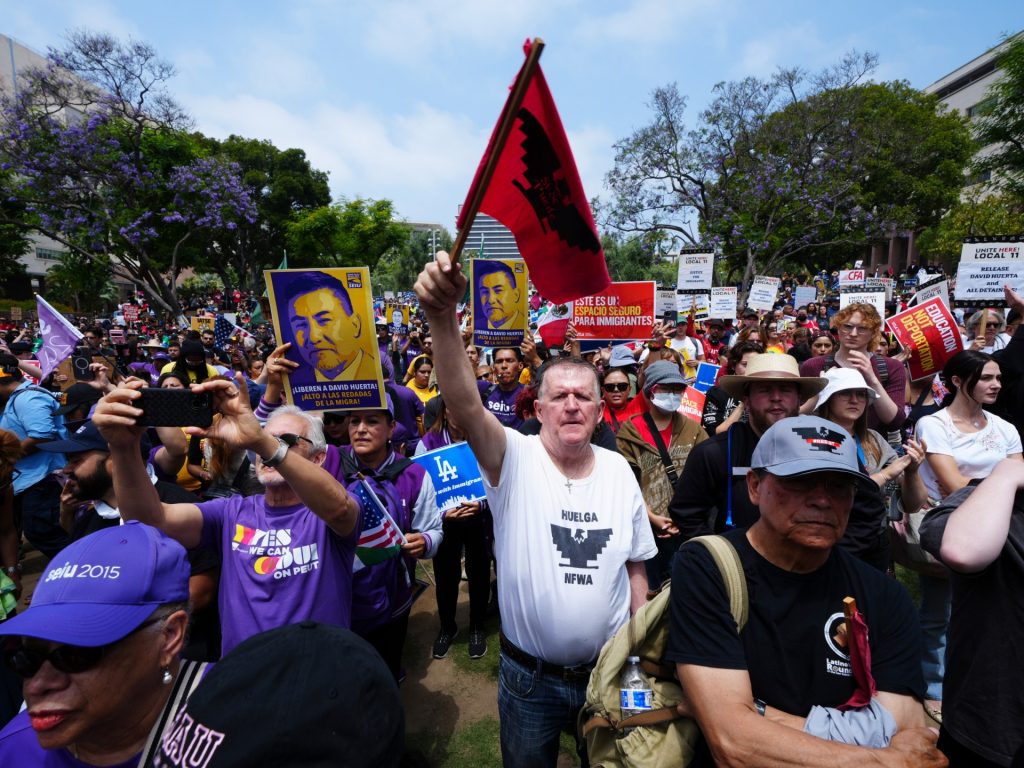
The Pentagon will send a Marine battalion to Los Angeles in a major escalation of President Donald Trump’s response to anti-immigration enforcement protests, the United States military has said. The statement on Monday confirmed the “activation” of 700 Marines to help protect federal personnel and property in the California city, where Trump had deployed the National Guard a day earlier. Pentagon spokesman Sean Parnell said later on Monday that an “additional” 2,000 National Guard troops would also be mobilised. The announcements came despite opposition from state officials, including California’s Governor Gavin Newsom, who has mounted a legal challenge to the deployment of the National Guard. In a statement, the military said the “activation of the Marines” was meant to help “provide continuous coverage of the area in support of the lead federal agency”. Speaking to the Reuters news agency, an unnamed Trump administration official said the soldiers would be acting only in support of the National Guard and other law enforcement. Advertisement The official said that Trump was not yet invoking the Insurrection Act of 1807, which would suspend legal limitations that block the military from taking part in domestic law enforcement. Speaking shortly before the reports emerged, Trump said he was open to deploying Marines to Los Angeles, but said protests in the city were “heading in the right direction”. “We’ll see what happens,” he said. Reporting from Los Angeles, Al Jazeera’s Rob Reynolds said protests on Monday organised in the city centre by union groups were peaceful. He noted that the National Guard, which Trump had deployed to the city on Sunday, played a minimal role in responding to the protests, only guarding federal buildings. That raised questions over why the Trump administration would feel a Marine deployment was needed. “[The National Guard] didn’t engage with the protesters. They didn’t do much of anything other than stand there in their military uniforms,” Reynolds said. He added that there is an important distinction between the National Guard, a state-based military force usually composed of part-time reserves, and the more combat-forward Marines, which are the land force of the US Navy. “Now the Marines, this is a whole different thing. The United States sends Marines overseas where US imperialist interests are at stake, but not to cities in the United States,” he said. Newsom’s office, meanwhile, said that according to the information it had received, the Marines were only being transferred to a base closer to Los Angeles, and not technically being deployed onto the streets. Advertisement Still, it said the “level of escalation is completely unwarranted, uncalled for, and unprecedented – mobilising the best in class branch of the US military against its own citizens”. California mounts challenge The updates on Monday came shortly after Newsom and California Attorney General Rob Bonta announced that the state had filed a lawsuit challenging Trump’s decision to deploy the National Guard to Los Angeles. Newsom has maintained that local law enforcement had the capacity to respond to protests over US Immigration and Customs Enforcement (ICE) raids in Los Angeles and the nearby city of Paramount, which first broke out on Friday. The Democratic state leader accused Trump of escalating the situation, saying in a statement that the president was “creating fear and terror by failing to adhere to the US Constitution and overstepping his authority”. “This is a manufactured crisis to allow him to take over a state militia, damaging the very foundation of our republic,” Newsom said. The California lawsuit argues that the legal authority Trump invoked to deploy the National Guard requires the consent of the state’s governor, which Newsom did not provide. Trump on Monday indicated that he would support Newsom being arrested for impeding immigration enforcement, responding to an earlier threat from the president’s border tsar, Tom Homan. Trump’s response to the protests represented the first time since 1965 that a president deployed the National Guard against the will of a state governor. At the time, President Lyndon B Johnson did so to protect civil rights demonstrators in Alabama. Advertisement Protests continue Protests against Trump’s crackdown – as well as his overall immigration policy – continued on Monday. Standing in front of Ambiance Apparel in Los Angeles, one of the sites raided by ICE agents last week, Indigenous community leader Perla Rios spoke alongside family members of individuals detained by immigration agents. Rios called for due process and legal representation for those taken into detention. “What our families are experiencing is simply a nightmare,” Rios said. Meanwhile, the Service Employees International Union (SEIU) called for protests in cities across the country over the Trump administration’s response to demonstrations, which included the arrest of the union’s California president David Huerta. Huerta was detained on Friday during immigration raids and charged with conspiracy to impede an officer during immigration enforcement operations. “From Massachusetts to California, we call for his immediate release and for an end to ICE raids that are tearing our communities apart,” the SEIU said in a statement. Protesters also gathered in New York and Los Angeles in response to Trump’s latest ban on travellers from 12 countries, a policy critics have decried as racist. Speaking at a protest in New York City on Monday, Murad Awawdeh, president of the New York Immigration Coalition, said the policy was “a continuation of the Muslim and travel ban under the first Trump administration, which separated families and harmed our communities”. Advertisement The policy, he said, was creating “an immense amount of fear”. Adblock test (Why?)
What is happening in Los Angeles is not law enforcement, it’s occupation
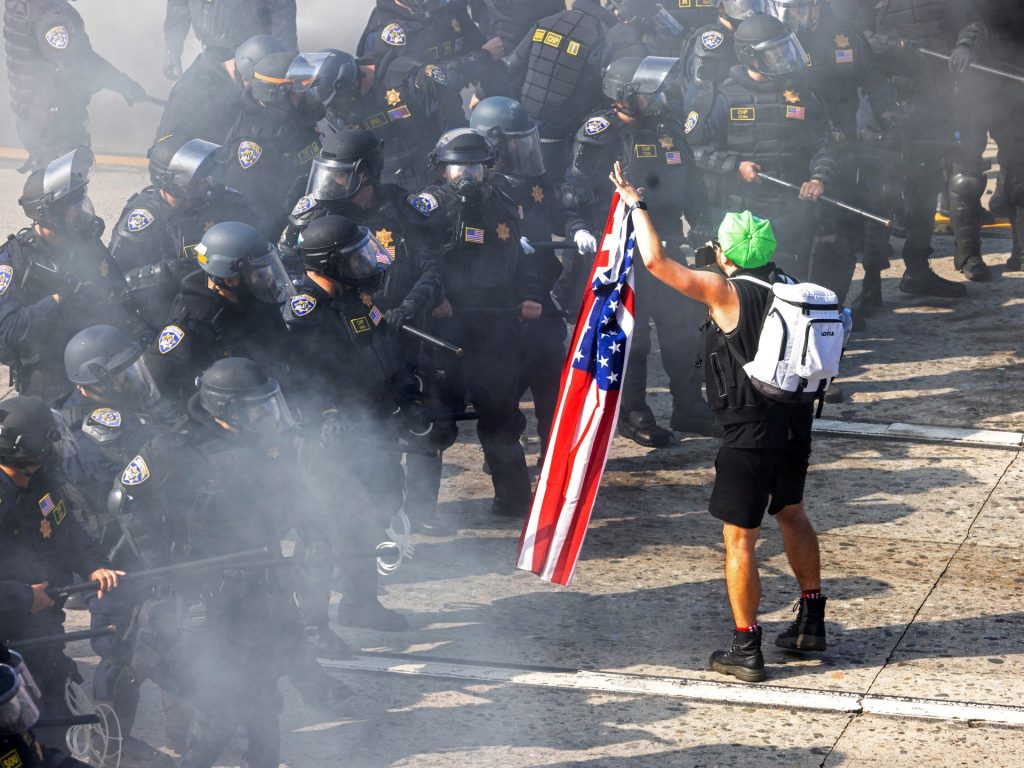
The scenes unfolding in Los Angeles should alarm every American who values constitutional governance. Federal troops have been deployed to a major American city not in response to an insurrection or natural disaster, but to suppress protests against immigration enforcement operations. The whole of downtown Los Angeles has been declared an “unlawful assembly area”. This represents a dangerous escalation that threatens the very foundations of the US democratic system. What began as routine raids by US Immigration and Customs Enforcement (ICE) on June 6 quickly spiralled into something far more ominous. Federal agents swept through Los Angeles, detaining 121 individuals from restaurants, stores and apartment buildings. The raids were conducted in broad daylight, with a calculated boldness that seemed designed to provoke. The community’s response was swift. By the afternoon, protesters had gathered downtown, not as rioters but as a grieving community, holding signs and chanting “Set them free!”. Advertisement This was grief made public, anger given voice. But in today’s America, even peaceful displays of grief and anger are not allowed when they go against the narrative set by those in power. The police responded with force. Tear gas canisters flew. Flash-bang grenades exploded. A peaceful demonstration transformed into a battlefield — not because protesters chose violence, but because the government did. US President Donald Trump decided to escalate further. He signed a memorandum deploying 2,000 National Guard troops to Los Angeles, with Defense Secretary Pete Hegseth threatening to mobilise active-duty Marines if protests continued. The legality of these actions is questionable at best. Under the Insurrection Act, federal troops can only be deployed after a public proclamation calls for citizens to disperse. Such a proclamation has not been made, and Trump has not invoked the act. Governor Gavin Newsom, who has the power to decide on matters of security in the state of California, was not consulted; he was simply informed. There is no widespread rebellion threatening the authority of the United States. There are no enemy combatants in Los Angeles, just angry, grieving people demanding dignity for their communities. What we’re witnessing is not the lawful execution of federal authority but improvisation masquerading as application of law, the slow erosion of constitutional order, replaced by declaration, spectacle, and muscle. If challenged in court, this deployment would likely be deemed illegal. But that may not matter – and that is the most chilling aspect of this crisis. We are fast moving towards a place where illegality no longer matters, where muscle has arrived with or without paperwork, and law is merely a facade. Advertisement This moment cannot be understood in isolation. As scholar Aime Cesaire observed in his analysis of colonialism, violence in the periphery inevitably returns to the metropole. The tools of oppression developed abroad always find their way home. In the US, this has been a decades-long process. In 1996, a provision in the National Defense Authorization Act allowed the Pentagon to transfer surplus military-grade weaponry to local police departments. In the following three decades, the same weapons that were used for imperialist violence abroad were transferred to police departments to deploy in poor and marginalised communities. Then with the start of the “war on terror”, tactics to target and subjugate foreign populations were transferred at home to use against vulnerable communities. Congress passed sweeping laws like the USA PATRIOT Act and amendments to the Foreign Intelligence Surveillance Act, enabling mass surveillance and intelligence gathering on US soil. The 2001 Authorization for Use of Military Force Against Terrorists allowed for indefinite military detention of US citizens, while a Supreme Court ruling in Holder v. Humanitarian Law Project expanded the “material support” doctrine to criminalise even peaceful engagement with blacklisted groups. Programmes like Countering Violent Extremism (CVE) turned schools and mosques into surveillance hubs, targeting Muslim, Arab, and South Asian communities. While outside the US government was pursuing a campaign of renditions, torture and illegal detention at Guantanamo Bay, at home, it was deploying lawfare against “suspect” communities. Advertisement The 2008 Holy Land Foundation trial introduced “secret evidence” in a US criminal court for the first time, with an anonymous Israeli intelligence officer claiming he could “smell Hamas” on defendants. Georgia’s prosecution of Cop City protesters under “terrorism” charges directly borrowed from this playbook, as did Tennessee’s Bill HB 2348, which extends policing powers to suppress peaceful protests. After October 2023, the US government violated its own laws in order to participate directly in the genocide in Gaza, providing Israel with weapons and intelligence. The mass repression and erasure that Palestinians had suffered at the hands of their US-backed colonisers were transferred on American soil. The government launched an unprecedented attack on free speech and academic freedom, cracking down on students protesting the genocide and encouraging retribution against pro-Palestinian voices. We’ve seen tenure revoked, protesters surveilled, and dissent criminalised. Palestinians and their allies have endured a fourfold increase in harassment, doxing, and employment loss; they have also faced violent attacks and murder. All this started not under Trump, but under his “Democratic” predecessor, former US President Joe Biden, who also increased the budget of police departments by $13bn and expanded ICE’s powers. The pattern is clear: repressive measures developed to target foreign populations have become tools to suppress all dissent at home. What is happening in Los Angeles and other cities isn’t about law enforcement; it’s about power projection, about demonstrating that defiance will be met with overwhelming force and quashed. Advertisement The legal framework matters less than the spectacle. When federal agents fire flash-bang grenades at protesters outside Home Depot stores, when ICE directors accuse mayors of siding with “chaos and lawlessness”, when FBI officials tweet about hunting down rock throwers, we’re watching the construction of a narrative that justifies state violence. This is how soft coups unfold: not with tanks rolling down Pennsylvania Avenue, but through executive memos, press briefings, and military logistics disguised as public safety. The Insurrection Act becomes a dead letter not through repeal but through irrelevance. If this precedent stands,
What is the national guard at the heart of Trump’s Los Angeles standoff?
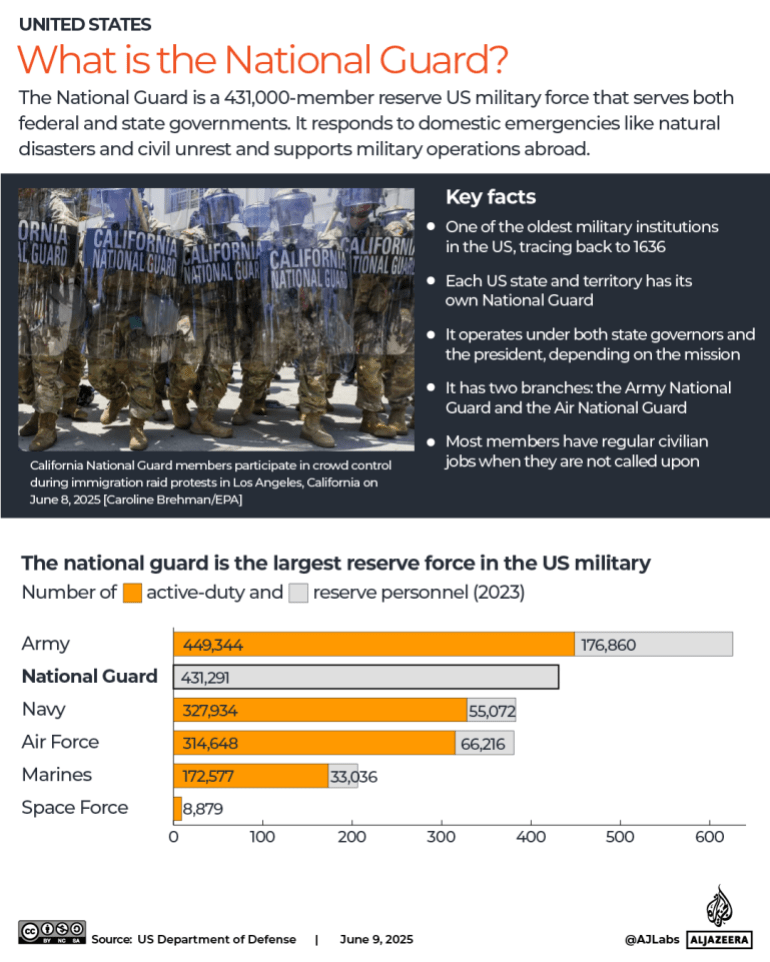
As United States President Donald Trump’s administration cracks down on immigrants and protesters in Los Angeles, it has deployed 2,000 members of the national guard to aid its efforts. Trump authorised the deployment after the protests began on Friday following Immigration and Customs Enforcement (ICE) arrests of 44 people in the city for violating immigration laws. California Governor Gavin Newsom, Los Angeles Mayor Karen Bass, former Vice President Kamala Harris and many other senior leaders of the Democratic Party have criticised Trump’s deployment. They’ve described the national guard’s use against protesters as a provocation aimed at further inflaming tensions already roiling the country’s second largest city. But what is the national guard, and why is its deployment such a political flashpoint? What is the national guard? The national guard is a branch of the US military that can perform state and federal functions. This means the guard is largely used to respond to state-level emergencies but can also be federalised. The president can also deploy national guard soldiers to overseas missions. Advertisement The guard’s origins trace back to 1636 when it started as citizen-soldier militias in Massachusetts, which is now a US state but was then a British colony. The national guard became an organised force after the passage of the Militia Act of 1903. The two world wars solidified its status as an organised branch of the US military. An air national guard was established in 1947 to complement a territorial force. How many soldiers are in the national guard? The national guard had 431,291 members as of 2023, the latest data released by the US Department of Defense. That included the army national guard, which consists of 326,317 soldiers, and the air national guard, which has 104,974 members. Many members of the guard serve part time while working civilian jobs or attending college. All members recruited into the guard have to undergo basic training. After this, they attend drills at regular intervals. Typically, drills take place one weekend each month. Every year, members attend a two-week training. (Al Jazeera) How is the national guard deployed? Typically, if a US state is experiencing an emergency that requires a national guard deployment as a response, the state’s governor may deploy its forces stationed in the state. However, presidents can also federalise the national guard from a state, but typically, this requires a governor’s approval to do so. When is the national guard deployed? The guard is deployed in cases of natural disasters or severe weather, civil unrest, war or when election assistance is needed. Advertisement In 2005, for instance, about 50,000 national guard soldiers were deployed after Hurricane Katrina hit multiple southern US states. In January, Newsom deployed the national guard as wildfires ravaged several areas of Los Angeles. In recent years, plainclothes national guard soldiers have staffed polling places during elections. During the current protests, however, Trump deployed the guard in Los Angeles without Newsom’s approval. Robert Cohen, professor of history and social studies at New York University, told Al Jazeera that Trump’s decision to deploy the national guard without getting Newsom on board was “wrong, but typical of the way Trump’s partisanship pollutes almost all of his major decisions”. When have presidents federalised the national guard in the past? In 1957, President Dwight D Eisenhower federalised the Arkansas national guard to desegregate public schools after the US Supreme Court’s Brown v Board of Education ruling, which established that racial segregation in public schools is illegal. In 1992, California Governor Pete Wilson and President George HW Bush, both Republicans, deployed the national guard to quell riots in Los Angeles. Protests, looting, assaults and arson broke out after four police officers who were filmed beating Rodney King, an African American man, for 15 minutes were acquitted of charges of excessive force. What is the debate around the national guard’s deployment? An act called the Posse Comitatus Act of 1878 generally prevents the national guard and other branches of the US military from being used in civilian law enforcement. Presidents may circumvent this by invoking the 1807 Insurrection Act, which gives the US president the power to deploy the military to suppress an insurrection. Advertisement In 1965, President Lyndon B Johnson invoked the act and deployed the guard to protect civil rights marchers in Alabama. He did this without taking Alabama Governor George Wallace, a known segregationist, on board. Before Saturday, this was the last time a US president had deployed the national guard without the approval of the state’s governor. On Saturday, instead of using the Insurrection Act, Trump invoked a similar federal law, called the Title 10 authority, to deploy the California national guard without Newsom’s approval. Adblock test (Why?)
Canada to meet NATO spending threshold before schedule, Carney says

Prime Minister Mark Carney pledges to shift defence spending away from the US and towards the EU. Canada will meet NATO’s defence spending threshold of 2 percent this year as it shifts spending away from the United States and strengthens its relationship with the European Union, according to Prime Minister Mark Carney. Carney made the announcement on Monday, warning that in a “darker” world, Canada must reduce its security dependence on the US. In a speech at the University of Toronto, he said the country would hit the target five years earlier than anticipated. Canada has been realigning its defence partnerships to better align with the EU, which marks a significant break from Ottawa’s longstanding reliance on the US. The country plans to buy more defence equipment, including fighter planes, from Europe. His government is also reviewing the planned purchases of F-35 jets from the US to assess alternative options. “Our military infrastructure and equipment have aged, hindering our military preparedness,” Carney said. “Only one of our four submarines is seaworthy. Less than half of our maritime fleet and land vehicles are operational. More broadly, we are too reliant on the United States.” Advertisement “The threats that Canada faces are multiplying,” he added. Carney’s pledge follows similar commitments by other NATO members and comes after sustained pressure from US President Donald Trump for allies to increase defence spending. Increasingly, hostile language, including Trump’s jabs at turning Canada into the 51st US state, has increased tensions with Ottawa. Canada spent 1.33 percent of its gross domestic product (GDP) on defence in 2023, according to NATO data. Since taking office in mid-March, Carney has issued a series of stark warnings about what he describes as a shift in US global leadership under Trump. “The United States is beginning to monetise its hegemony: charging for access to its markets and reducing its [relative] contributions to our collective security,” Carney said, criticising Trump’s trade policies. “We should no longer send three-quarters of our defence capital spending to America,” the prime minister added. He also warned that Canada has “been jolted awake by new threats to our security and sovereignty,” citing Russia and China as key concerns. Carney framed the increase in defence spending as a strategic necessity “to protect Canadians, not to satisfy NATO accountants”. In April, NATO announced that 22 of its 32 members had reached the 2 percent spending target. European countries, in particular, have ramped up military budgets in the wake of Russia’s 2022 invasion of Ukraine, and NATO now considers the 2 percent threshold a minimum requirement. Adblock test (Why?)
Los Angeles immigration protest clashes: What’s the latest and what’s next?
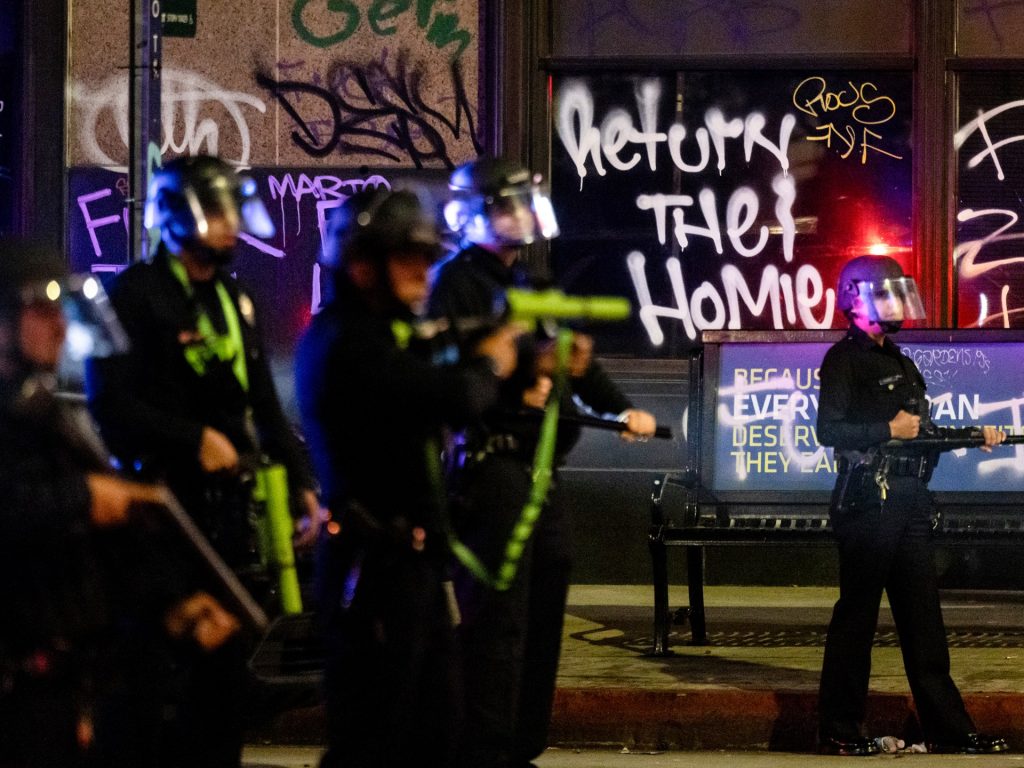
Los Angeles has witnessed a third night of protests against the immigration crackdown by United States President Donald Trump’s administration. The administration’s decision to deploy the national guard has widened the rift between Republicans and Democrats, including the leadership of California. And now, the Trump administration has indicated that it might send US marines in to help quell the protests. That scenario would mirror the events of 1992 when marines were deployed alongside the national guard for law enforcement in Los Angeles during riots that followed the acquittal of four policemen filmed beating Rodney King, a Black man. What is the latest from the protests? On Sunday, the Los Angeles Police Department (LAPD) declared the protests in downtown LA an “unlawful assembly”. “You are to leave the Downtown Area immediately,” the LAPD said in a post on X. One group of protesters shut down a major thoroughfare in central Los Angeles, the 101 Freeway. The LAPD wrote that the freeway was shut down “due to demonstrators throwing objects onto the SB [San Bernardino] lanes of the 101 Freeway and damaging multiple police vehicles”. Advertisement The protest also spilled over to San Francisco, where protesters rallied in solidarity with those in Los Angeles outside an Immigration and Customs Enforcement (ICE) building. San Francisco police declared this an unlawful assembly and arrested about 60 people. On Saturday, Trump deployed about 2,000 national guard soldiers to Los Angeles despite objections from California Governor Gavin Newsom and Los Angeles Mayor Karen Bass. What is unlawful assembly? Legally, an unlawful assembly refers to an intentional meeting of three or more people that disrupts public peace. Why are there protests in LA? The protests began on Friday night after ICE officials arrested 44 people for violating immigration laws. The US Department of Homeland Security later said ICE officials had arrested a total of 118 immigrants who did not have the required documents to stay in the US. Uniformed ICE agents went through the city in caravans of unmarked military-style vehicles to make the arrests. The protests sprung up as a response to these operations. Crowds of demonstrators gathered outside a facility where some of the detainees were believed to be held. Where are the Los Angeles protests? The protests are largely taking place in downtown Los Angeles, where protesters spray-painted anti-ICE slogans on the walls of the Edward R Roybal Federal Building. Which agencies are now involved? ICE was the agency leading the immigration arrests. After protests broke out on Friday, the LAPD was called in to quell civil unrest. Advertisement Police Chief Jim McDonnell said at a news conference on Sunday that in recent days, many protests in the city have been peaceful. “However, when peaceful demonstrations devolve into acts of vandalism or violence, especially violence directed at innocent people, law enforcement officers and others, we must respond firmly.” On Saturday, Trump ordered the deployment of at least 2,000 national guard soldiers to Los Angeles County. Newsom asked Trump to rescind this order. “We didn’t have a problem until Trump got involved,” he wrote. “This is a serious breach of state sovereignty – inflaming tensions while pulling resources from where they’re actually needed.” Bass described Trump’s deployment of the national guard in Los Angeles as “a chaotic escalation”. Could the marines be deployed next? The US military’s Northern Command issued a statement on Sunday saying about 500 marines are in a “prepared to deploy status” and they are ready to assist the Department of Defense. “The National Guard, and Marines if need be, stand with ICE,” Defense Secretary Pete Hegseth wrote in an X post on Sunday. Deranged = allowing your city to burn & law enforcement to be attacked. There is plenty of room for peaceful protest, but ZERO tolerance for attacking federal agents who are doing their job. The National Guard, and Marines if need be, stand with ICE. https://t.co/KVjvvnaL70 — Pete Hegseth (@PeteHegseth) June 8, 2025 Other Republicans have echoed Hegseth’s sentiments. “One of our core principles is maintaining peace through strength. We do that on foreign affairs and domestic affairs as well. I don’t think that’s heavy-handed,” Mike Johnson, speaker of the US House of Representatives, told ABC News. Advertisement In an X post on Sunday, Newsom described Hegseth’s threat to deploy the Marines as “deranged behavior”. How many people have been arrested? At least 10 people were arrested during the protests on Sunday, LAPD Captain Raul Jovel said at the news conference. However, he added that this number was “fluid and preliminary” and arrests were ongoing. On Saturday, 29 people were arrested, according to McDonnell. Jovel said three officers were injured in the clashes. He added that the injuries were not significant enough for the officers to be transported to hospital. What’s happening to Waymo in Los Angeles? The protesters have also vandalised and set ablaze several self-driving cars that belong to the ride-hailing company Waymo. Los Angeles media outlets reported that protesters spray-painted anti-ICE messages on multiple self-driving cars lined up between Arcadia and Alameda streets in Los Angeles. On Sunday in a post on X, the LAPD advised against visiting the area. What are Trump administration officials saying? In a series of posts on his Truth Social platform, Trump criticised Newsom and Bass, both Democrats. In one post on Sunday, he wrote: “Governor Gavin Newscum and ‘Mayor’ Bass should apologise to the people of Los Angeles for the absolutely horrible job that they have done, and this now includes the ongoing L.A. riots. These are not protesters, they are troublemakers and insurrectionists. Remember, NO MASKS!” Homeland Security Secretary Kristi Noem wrote in an X post: “A message to the LA rioters: you will not stop us or slow us down. @ICEgov will continue to enforce the law.” A message to the LA rioters: you will not stop us or slow us down. @ICEgov will continue to enforce the law. And if you lay a hand on a law enforcement officer, you will be prosecuted to the fullest
Why are people protesting in Los Angeles?
[unable to retrieve full-text content] The raids that triggered the protests in LA were part of a much wider crackdown that campaigners call unjust.

